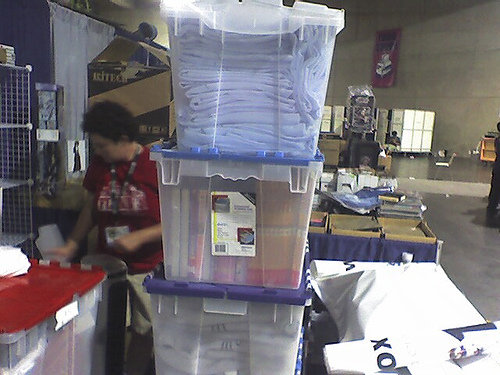I sure know how to keep busy. The San Diego Comicon ended just two days ago, but I’m already several hundred miles away, at the Grand Canyon. I’m taking a much-deserved vacation after our hard convention season this year, touring in an RV with my mother and my two kids, who just flew in from Japan. We’re having great fun near the South Rim, doing very “American” things like eating hot dogs and beans and making s’mores (and with real graham crackers, too, not saltines like they use in Japan). It’s a challenge, keeping the kids entertained in the middle of hot, hot Arizona, but we’re having a blast so far…
I’ve learned something about my own country so far on this trip, at the campgrounds we’ve been parking our RV at each night: in addition to folks from all corners of the US of A, we’ve met people from such far-flung places as Germany, Israel and the U.K. It seems that a popular way for foreign visitors to see the “real America” is to rent an RV and hit the road. It’s been interesting, talking with people from countries like the Netherlands about what they’ve seen in this great, wide country, and they’re always surprised to meet an American who’s an ex-pat in another country. Since people in most other countries pay a lot more for gas than we do in the States, I’m sure the fuel required to drive an RV through the U.S. looks reasonable by comparison.
Most of us know the name Americus Vespucius, the explorer and mapmaker who coined the phrase “New World,” and how his name came to be placed on maps representing North and South America. Japan got its current name through a very indirect route. The early name for Japan used by European countries was Cipangu, which and the country was mentioned in the tales of Marco Polo (something the Japanese are no doubt thrilled with, knowing their penchant with making a good impression on Westerners). Eventually this morphed into Zipang, and eventually, the modern Japan in the English language. In Japanese, the name of Japan is either Nihon or Nippon (both are correct). Written in kanji (日本), the name means “origin of the sun,” which is a fairly reasonable name since the sun appears to come from Japan, when seen from China, and they didn’t know much about those things back then.
Back in the Edo Period, there were four castes in Japanese society: warrior (samurai), farmer, artisan and merchant, with merchants at the bottom of the rung, despite their actual position of importance as movers of the economy. There seem to be similar castes in Japan today, which might include such groups as salarymen (full-time employees of private companies), providers of skilled services like carpenters, farmers, and Japanese public employees. The latter group, called komuin (KOH-mu-in), are an interesting part of society here, consisting of every national, prefectural or local employee, every fireman, every policeman, every tax collector, and every educator at any level. Postal employees used to fall into the komuin category, but Prime Minister Koizumi has privatized the post office, essentially making it a publicly mandated private organization. Responsible for administering Japanese laws, collecting taxes, granting permits for various activities, issuing marriage licenses and generally making Japan run smoothly, komuin are in theory like public servants in the U.S., and yet quite different. Unlike the private sector, where companies must work hard and show results, Japan’s public employees enjoy incredible stability, and theirs is the last segment of society with de facto lifetime employment in Japan. Young people who want the comfort of the stablest possible job and a long, steady climb up the social ladder aspire to pass the difficult tests that allows you to work as a public employee, although of course, if your parents are friends with your local city councilman he may be able to get you a job even if you haven’t passed the test — Japan is nothing if not flexible. While Japan’s public employees provide a solid white-collar backbone of stability for the country, there are a lot of complaints about lack of fiscal restraint in Japan’s public sector. For example, despite the decade-long recession in Japan, our prefecture found the money to build a 32-story skyscraper-style prefectural office that cost hundreds of millions to erect yet does nothing but provide government employees with a beautiful view. Before starting J-List, I had the opportunity to work as a komuin in my city for a few months, and I learned a lot from the experience (including that I didn’t want to have a life that was that stable).
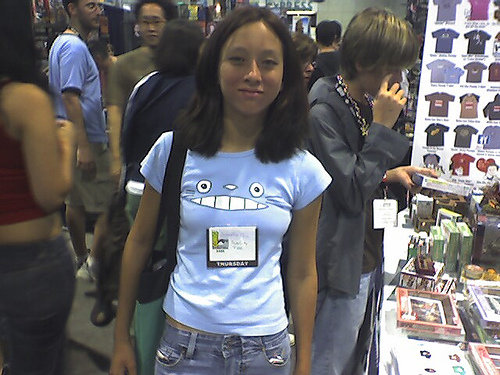
More pics from Comicon. Hey, I’ve seen that shirt before!
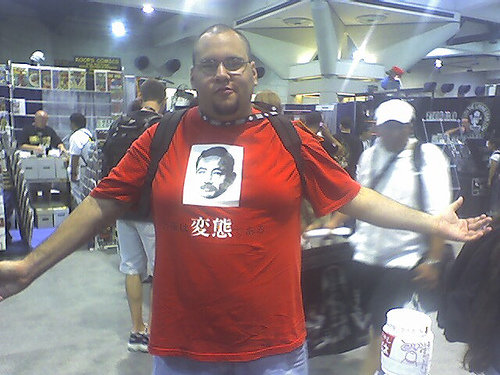
We are always retiring older J-List shirts for new ones, and so we have quite a lot of older shirts. This is one, and this guy wears it proudly as an “old school” J-List fan.
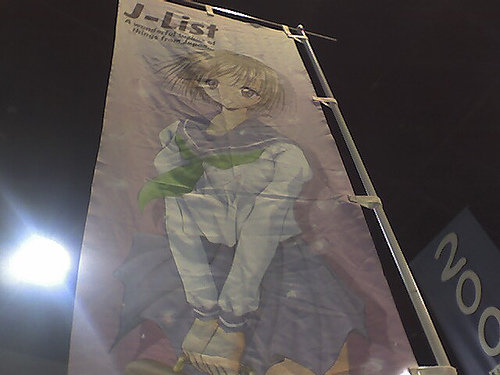
We always get a lot of comments on our banners, which were designed by Naomoto Sakaki or the Borderline series. We get plenty of offers to buy them, although they’re not for sale.
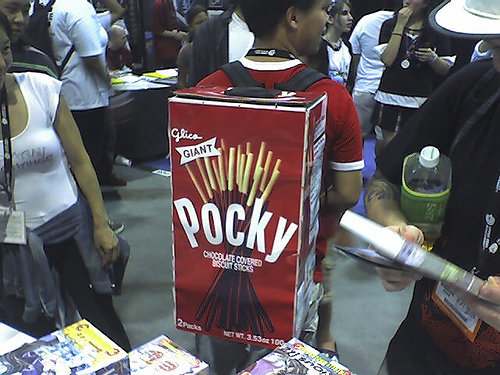
This guy was walking around in a Pocky costume.

This girl was so hot, I thought for a moment I was at the AVN show in Las Vegas. She’s holding the Domo-kun plush that was such a hit at the show. Bummer that my Treo decided to put an artifact in the picture.
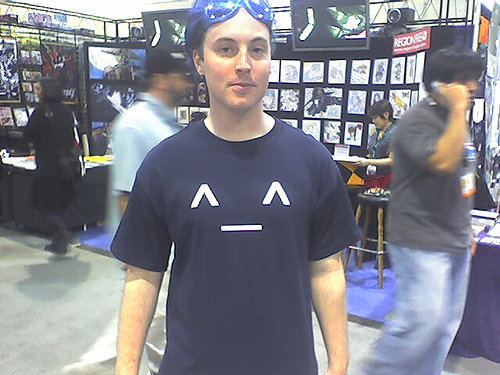
I liked this shirt, too.
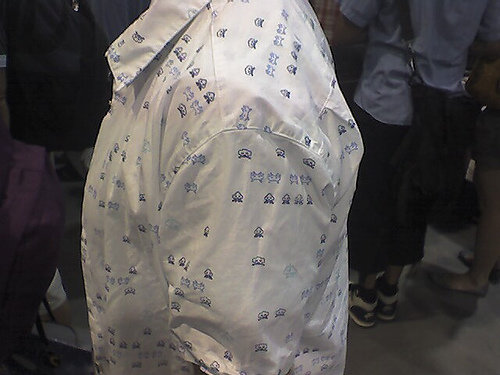
And this one, with Space Invaders printed into the shirt.
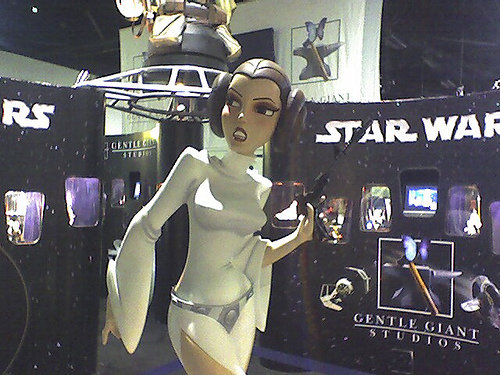
Isn’t this the coolest thing in the world? I love the Clone Wars-style redesigns of the Star Wars characters.








